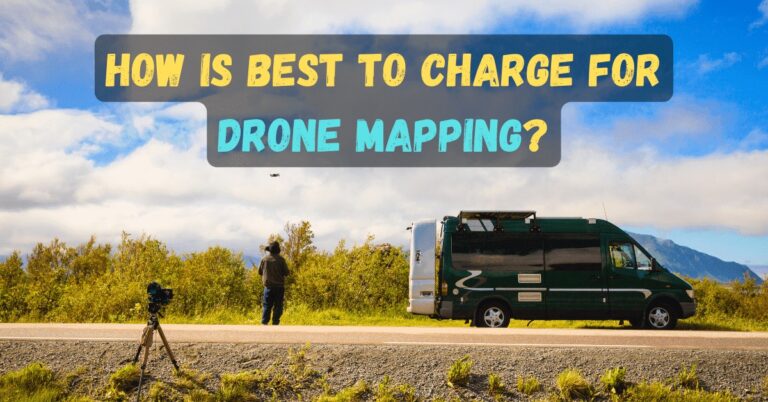How Do Drones Improve Gaming?

The advent of drones has ushered in a new era of innovation across multiple industries, including gaming.
Drones, which are essentially unmanned aerial vehicles (UAVs), have evolved rapidly due to technological advancements.
Originally developed for military and surveillance purposes, drones have now permeated recreational and professional spheres, including their burgeoning role in gaming.
This article aims to provide an overview of how drones have been integrated into the gaming industry, highlighting their transformative impact.
Evolution of Drone Technology
Initially, drones were primarily used for aerial photography and videography, providing unique perspectives that were previously unattainable.
As technology progressed, enhancements such as improved battery life, advanced GPS systems, and sophisticated sensors expanded their applications.
The gaming industry, ever eager to adopt cutting-edge technology, saw immense potential in these flying machines.
Developers and tech enthusiasts began to explore how drones could be used to create immersive gaming experiences, blending the physical and virtual worlds.
Drones in Various Gaming Formats
Today, drones are utilized in various gaming formats, ranging from augmented reality (AR) and virtual reality (VR) integrations to competitive drone racing leagues.
Augmented Reality (AR) and Virtual Reality (VR) Integrations
In AR and VR settings, drones serve as dynamic game controllers, enhancing player interaction and engagement.
For instance, players can control drones to navigate through virtual obstacle courses or use them to interact with characters and objects within a game.
Competitive Drone Racing
Competitive drone racing has emerged as a popular sport, where players pilot drones through intricate courses, showcasing their piloting skills and strategic acumen.
This integration not only enriches the user experience but also opens up new avenues for game design and storytelling.
Frustrated that your RC drone refuses to take flight? Don’t worry, we’ve got you covered! Check out our guide for “What are Some Possible Solutions For an RC Drone That Won’t Take Off?“
Enhanced Immersive Experiences
The integration of drone technology in the gaming industry has significantly elevated the level of immersion that players can experience.
Virtual Reality (VR) Games
In VR games, drones can be utilized to capture 360-degree footage of real-world locations, which can then be seamlessly integrated into the game.
This allows developers to create highly realistic environments that players can explore in virtual reality, enhancing the overall sense of immersion.
For instance, games like “Drone Racing League Simulator” leverage drone technology to provide players with an authentic racing experience, replicating the thrill and challenges of real-world drone racing.
Augmented Reality (AR) Games
In AR games, drones can enhance the player’s interaction with the game world. By providing real-time data and visuals, drones can create more dynamic and interactive scenarios.
For example, “Pokémon GO” has experimented with drone technology to enhance the AR experience, allowing players to locate and capture Pokémon in a more interactive and engaging manner.
Development of Realistic Environments
Beyond direct gameplay integration, drone-captured footage also plays a crucial role in the development of realistic environments and scenarios in games.
High-quality aerial footage from drones can be used to create detailed maps and landscapes, providing a more immersive backdrop for the game narrative.
This approach has been successfully employed in games like “Microsoft Flight Simulator,” where drone footage is used to recreate real-world locations with remarkable accuracy.
Curious about flying a drone in Bali? Check out our guide to What Are the Drone Laws in Bali? (Drone Laws in Bali) for all the must-know regulations.
Competitive and Multiplayer Gaming
In the realm of competitive and multiplayer gaming, drones have emerged as a transformative technology, reshaping the dynamics of eSports and interactive gameplay.
eSports Event Coverage
Drones are increasingly being integrated into eSports events to provide live coverage, offering unparalleled aerial perspectives that captivate spectators and enhance their overall viewing experience.
By capturing high-definition footage from unique angles, drones allow audiences to appreciate the complexity and excitement of the matches, thereby bridging the gap between virtual and physical realms.
Drone Utilization in Major Tournaments
One notable instance of drone utilization in eSports is their presence in major tournaments such as the League of Legends World Championship and the Fortnite World Cup.
In these high-stakes competitions, drones are deployed to cover expansive venues, providing real-time aerial views that add a layer of depth and immersion for viewers.
This innovative approach not only amplifies the entertainment value but also allows event organizers to showcase every intricate detail of the player’s strategies and movements.
Drones in Multiplayer Game Mechanics
Beyond event coverage, drones play a pivotal role within the mechanics of multiplayer games themselves.
In titles such as Tom Clancy’s Rainbow Six Siege and Call of Duty: Warzone, drones are integral to gameplay, serving functions like reconnaissance and strategy planning.
These unmanned aerial vehicles enable players to scout enemy positions, gather intelligence, and coordinate tactical maneuvers, significantly influencing the outcome of matches.
The real-time interaction facilitated by drones adds a strategic dimension to the gaming experience, demanding heightened situational awareness and teamwork.
Curious about how high drones can fly? Check out our guide on What is The Maximum Altitude a Drone Can Reach and How Long Does it Take to Reach it?
Future Trends and Innovations
The evolution of drones in the gaming industry is set to accelerate as emerging technologies continue to develop.
Artificial Intelligence (AI) Integration
One of the most exciting prospects is the integration of artificial intelligence (AI) with drones. AI-driven drones could introduce new dimensions to gameplay, allowing for more sophisticated interactions with players and environments.
These drones could adapt in real-time to the actions of players, creating dynamic and unpredictable gaming experiences.
For instance, AI algorithms could enable drones to learn from player behavior, providing a customized and continuously evolving challenge.
Drone Swarms
Another promising advancement is the concept of drone swarms. Unlike single drones, swarms involve multiple units working in unison, offering complex scenarios that a single drone could not achieve.
Drone swarms could be used for coordinated attacks, intricate puzzles, or cooperative tasks within a game, adding layers of strategy and teamwork.
Autonomous Drones
The idea of autonomous drones also holds significant potential. These drones could operate independently, navigating game worlds and interacting with elements without direct human control, fostering more immersive environments.
5G and Cloud Gaming Integration
The integration of drones with cutting-edge technologies like 5G and cloud gaming promises to further revolutionize the gaming landscape.
The low latency and high-speed connectivity of 5G networks would enhance real-time drone control and responsiveness, crucial for a seamless gaming experience.
Cloud gaming could leverage drones to create expansive, resource-intensive worlds without the need for powerful local hardware, making high-quality gaming more accessible.
Thinking of taking down a rogue drone? Read first on how hard it is to shoot one down.
Challenges and Ethical Considerations
While these advancements are promising, potential challenges and ethical considerations cannot be ignored. Issues such as privacy, security, and the responsible use of AI in gaming must be addressed to ensure that these innovations are beneficial and safe for all users.
As the technology continues to evolve, developers and regulators will need to work collaboratively to navigate these complexities.
Conclusion
The integration of drone technology into the gaming industry represents a significant leap forward in creating immersive, interactive, and dynamic gaming experiences.
As drones become more advanced and integrated with emerging technologies, their impact on the gaming landscape will continue to grow, pushing the boundaries of what is possible in both VR and AR gaming.
By enhancing realism, interactivity, and strategic depth, drones are set to play a pivotal role in the future of gaming, offering exciting possibilities for developers and gamers alike.







